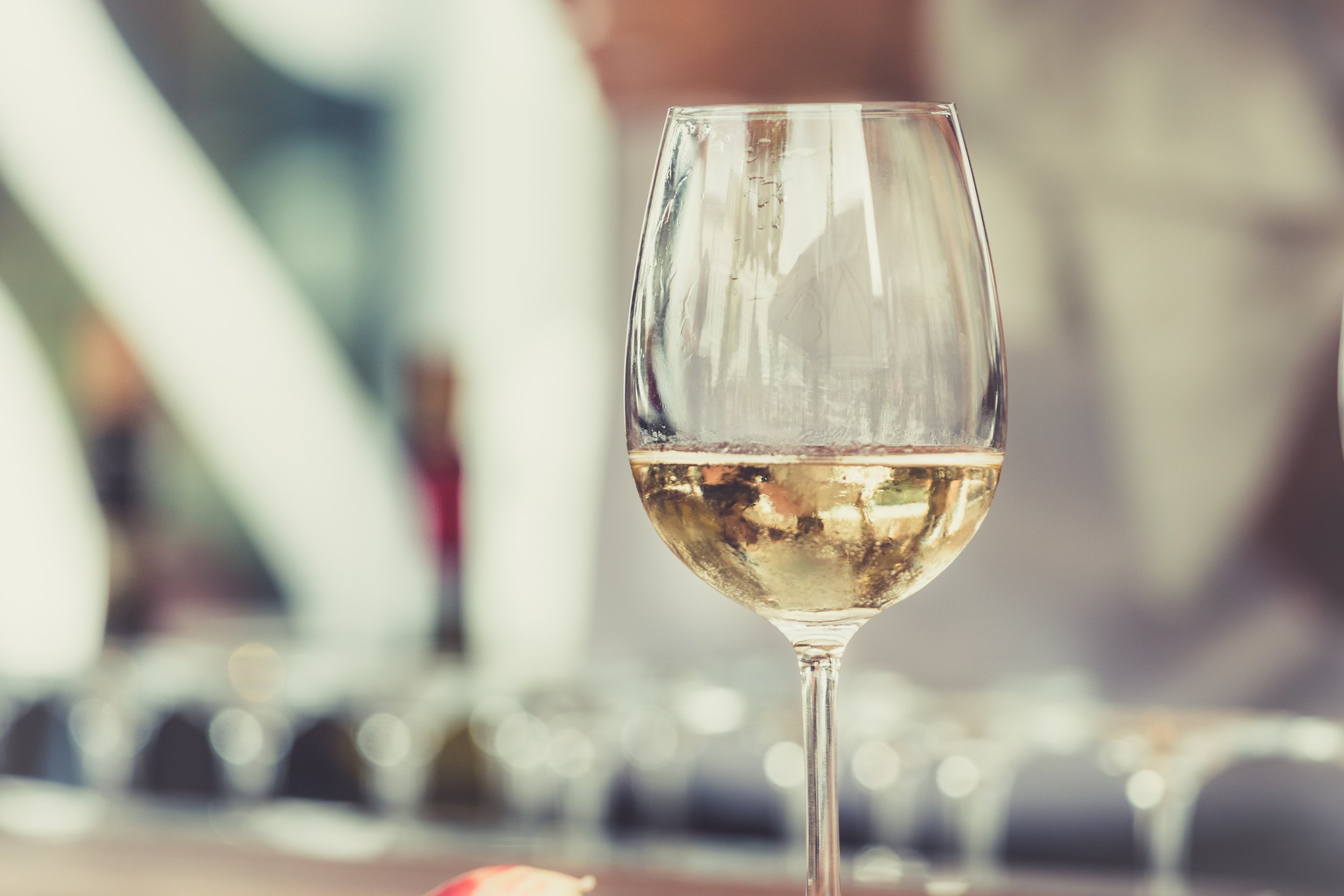Spring Wine: Focus on Grüner Veltliner
photo by Thomas Martinsen via Unsplash
This Austrian white wine is peppery, piquant, and perfectly pairable with everything you are serving .
It’s time to abandon root vegetables, comfort food and braised everything. Spring has finally arrived and with it are those first crops of slender asparagus, curled up ramps and funky fungi morels popping through the soil. Of course the big question is, what should we drink? Look to Austria.
“A glass of well-made grüner really is a wonderful thing,” declares Nicole Bernard, wine director at Trummer’s on Main in Clifton, Virginia. “With aromas and flavors of roasted pineapple core, apricots and white pepper on the finish, it’s a little like having the tropics in a glass.” Christina Sherwood, wine director for Granville Management Group which runs several concepts in the Los Angeles area, agrees, citing the appeal of the grape’s “citrus and stone fruits, white florals, hints of vegetal notes and classic spice of white pepper.”
Grüner veltliner is the most widely planted grape in Austria, where it’s vinified in two distinct styles that can attract fans of zesty sauvignon blanc or rich, oaky chardonnay, respectively. Niederösterreich is the country’s largest winemaking region, comprised of eight specified growing regions; within it, cooler Weinviertel is responsible for lighter, crisper styles that highlight citrus and green flavors along with herbaceous tones like radish says Bill Greene, executive chef of Peppervine in Charlotte, North Carolina. “Some people say [it even] smells like a can of green beans—or more outlandishly, a freshly-opened can of tennis balls!” Just like the um, cat’s pee aroma in some Sancerre though, whether or not a wafting scent of tennis balls is a funky attribute or a flaw is in the eye (or rather, nose) of the beholder. These wines may also exhibit a touch of effervescence and are meant to be uncorked during their attractive youth. Grüner can also express minerality in the form of chalk or wet river rocks, says Olivia Noren, beverage director for Japanese restaurant Yūgen in Chicago.
As you begin tracing the Danube west, you’ll increasingly encounter hills flanked with vineyards sloping southward towards the river valley, especially in the warmer areas of Kamptal and Wachau. Here offerings are decidedly more complex and age-worthy. “The full-bodied mouthfeel of [Wachau grüner from Smaragd] combined with ripe melon, apricot and white pepper is quite lovely,” Bernard says. “And some of my favorite examples [from Kamptal] have been aged for about six months or so in oak barrels, giving them richness and roasted/caramelized tropical fruit notes that are borderline hedonistic.” And then there are wines from the newer designation Wagram, which Greene defines as “less spicy or peppery with more pear notes while retaining the classic green vegetal character.”
Labels on grüner from Wachau list terms that can be head-scratching for consumers; they are actually a proprietary classification for dry whites that’s based on ABV. Steinfeder has a maximum ABV of 11%, for Federspiel it’s 12.5% ABV and Smaragd is reserved for bottles 12.5% ABV and higher.
Grüner can help navigate some of those persnickety ingredients on the table this time of year like asparagus and artichokes, as they can make wines taste bitter. Noren likes it with salads, vegetarian sushi and spring dishes featuring citrus and peas, green garlic, watercress, arugula and chive blossoms. “Grüner is also described as having phenolic bitterness that helps it stand up to charred broccoli, almonds, sundried tomato and gouda on naan,” she says. Of course a classic Austrian pairing is wiener schnitzel, and it also works with spicy Asian cuisine like Thai, Indian or Chinese.
Despite that rich fruit on the nose, 99% of the time these wines are going to be dry, Noren points out. The region’s vast winemaking history (which dates back to ancient Roman times) means the work of perfecting techniques and determining optimal sites has already been done, equating to a quality to price ratio that’s pretty unbelievable. “These wines are incredibly versatile and generally not very expensive,” Sherwood says. “Definitely worth a try.”
Bottles to try:
2017 Bernhard Ott Am Berg Grüner Veltliner ($22): “Not expensive and widely available, biodynamic but not really meant to be fussed over. Lovely pear and melon up front, nice peppery notes on the finish, perfect with salad with cucumbers and fennel,” says Greene.
2017 Rudi Pichler Federspiel Grüner Veltliner ($25) “Nice body, mango, ginger and orchard fruit lead the way, with a flight almond note and wonderful salinity on the finish. A fun wine to pair with take-out Chinese food or fried Brussels sprouts,” Greene says.
2017 Schloss Gobelsburg Gobelsburger Grüner Veltliner ($16): “From Kamptal, structured with minerality and aromatic fruit, this would go beautifully with roast chicken,” says Sherwood.
2017 Emmerich Knoll Loibner Federspiel Grüner Veltliner ($42): “Knoll is considered to be one of the greatest/benchmark producers of Austria. You won’t ever forget the taste of this wine. I pair it with a Japanese seaweed salad with a tempura-fried oyster, candied black sesame, celery root puree and marinated fraises de bois,” says Noren.
2014 Nikolaihof Hefeabzug Grüner Veltliner ($25): “Crisp with bright acidity and bursts of fresh citrus. A great brunch wine that pairs nicely with lobster eggs benedict. If you drink Chablis it will be to your liking,” Bernard says.
2016 Alzinger Ried Loibenberg Smaragd Grüner Veltliner ($55): “Ripe green pear, subtle citrus and orange blossoms. Pair with lamb curry or pad thai,” Bernard says.



